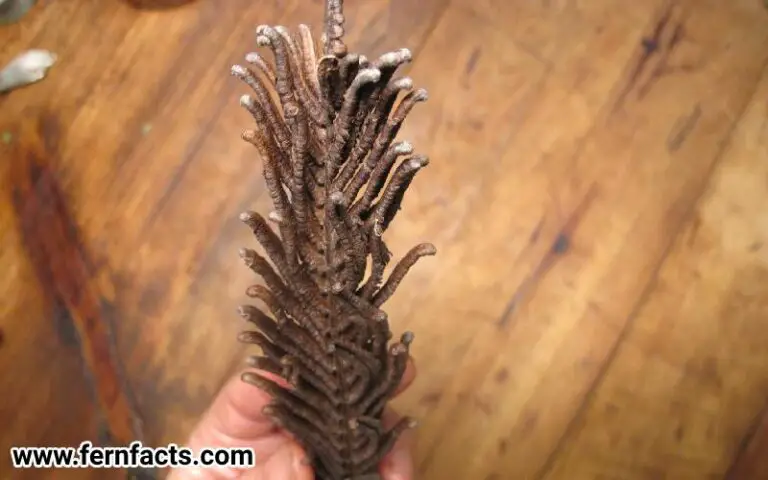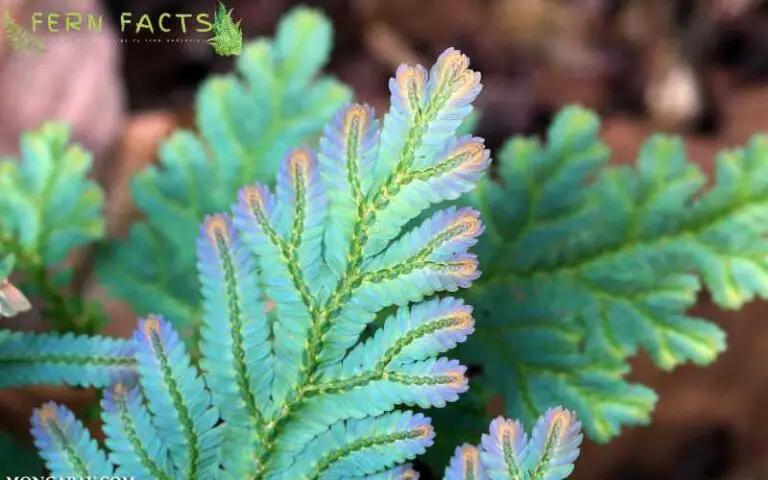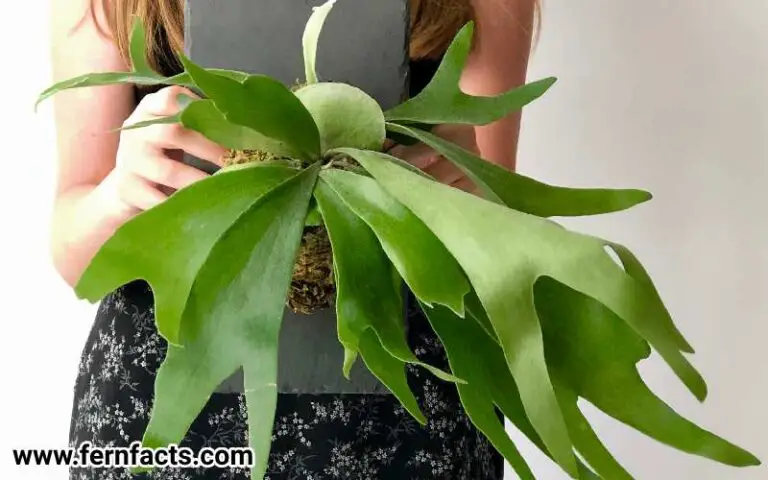Sword Fern Plant Care: How to Grow Sword Ferns
Do you know Sword ferns are one of the common varieties of ferns that are highly distributed in North America? More than 2000 varieties exist worldwide currently.
If you want to grow these ferns at your house, then read this article thoroughly. In this article, I’ll give you an overall idea about Sword fern’s characteristics.
Besides, I’ll talk about their ideal growing conditions, pruning and grooming maintenance, overwinter care, propagation process, and so on.
Also, I’ll discuss their common problems and solutions so that you can have healthy thriving ferns at your house. So let’s start with an overview of the Sword fern’s characteristics.
Overview of Sword Ferns
- Botanical name: Polystichum munitum
- Common names: Sword fern, western sword fern
- Plants: evergreen plants
- Native Region: North America
- Shade requirements: partial or full shade
- Height: around 60 to 120 cm
- Soil type: Chalk, clay, loam and sand
- Soil pH: acidic, alkaline, and neutral
- Hardiness: 3 to 9
- Tolerant: drought tolerance
Sword fern are the native ferns that are widely distributed in North America habitant in woodland and other forest areas.
However, you can also find them on the Pacific coast, Alaska, and Colombia as well. More than 20000 varieties exist currently throughout the world.
They are also used as ornamental plants in many gardens, yards, and other places. Similarly, they are used as garden landscapes to fill garden spaces as well.
Sword ferns have fertile yellow sori underneath their fronds. They usually grow horizontally under ideal conditions. These ferns prefer moist coniferous woodlands that retain their soil well-hydrated.
In the garden or native habitats, this sword fern can grow up to 1.5 meters long by distributing their fronds up to 50 to 180 cm. Moreover, these ferns also can tolerate various types of soil mixtures as long as the soil is moist enough.
You can easily grow these ferns at your house by making acidic soil with rich humus. This rich humus will maintain the soil’s nutrients and moisture.
They can tolerate some sort of dryness but not for longer. You have to water them to maintain the moisture level in their soil. Thus, they prefer a cool humid atmosphere with damp soil to thrive.
Sword Ferns Growing Requirements
Let’s find out the basic requirements for growing sword ferns in your garden.
Shade Requirements
Sword ferns thrive in dappled and filtered shaded places. Thus, they prefer partial to fully shaded places to thrive.
Although they can tolerate little exposure to the sun not for a longer time. Morning mild sunlight could be fine for them. But midday sun exposure can burn their fronds.
That’s why locate them in such a place where they can get dappled shade.
Watering
Sword ferns prefer moist and damp conditions. That’s why you have to water them until the soil is moist to a sufficient level. Don’t overwater or don’t waterlogged their soil.
They cannot stand overly soaked water; it can rot their roots. In general, you can give water to this fern once per week.
Similarly, Don’t keep the soil too dry although they can tolerate drought but not for too long. Drought conditions might give your plants a dry crispy frond.
Thus, water them on a scheduled basis. Besides, in the winter seasons, you can reduce watering levels. You can pour water twice monthly during winter seasons.
Soil Requirements
Sword ferns need slightly neutral and acidic soil. Similarly, well-drained Soil is also a blessing for this fern as this soil can drain out excessive water.
So rich humus acidic soil is needed for these sword ferns. And So, to prepare rich humus-drained soil, you can add organic matter, leaf mold, peat moss. All these proponents will enrich the soil’s nutrients and hold the moisture.
Temperature and Humidity
For native sword ferns, their ideal temperature would be 18°C to 24°C or 65°F to 75°F. However, they can tolerate up to -20°C. If the temperature drops below this level, they cannot survive. Since their hardy zone is between 3 to 8, therefore they enjoy a humid atmosphere.
Alternatively, you can also increase the humidity around your plants by placing a pebble tray or a humidifier. It will help to intensify the humidity level.
Fertilizer
Like all other ferns, sword ferns also need fertilizer during their growing seasons. So in the early spring and summer seasons, you can feed your plants.
For feeding, simply use a fertilizer with half strength in an NPK ratio of 20:20:20. Don’t over-fertilize your plant, it can give your ferns salt burn.
Sword Fern’s Pruning and Grooming
Sword ferns don’t need a high level of pruning and grooming. They lose their fronds during the winter seasons. But don’t immediately cut off the fronds; it might affect their growth.
Just wait for their growing seasons to come. Just before their growing seasons, simply cut off or remove their dead, damaged fronds. Don’t cut deeply or remove any new ingrown fronds. It can harm their growth cycle.
When You Should Do Propagation of Sword Ferns
You need to understand when you should do propagation so that the process gets successful. For instance, winter could be the least possible time for propagating these ferns.
During winter seasons their growth gets dormant. So if you propagate these ferns in winter, you will see no growth at this time.
Thus, you need to propagate these ferns at the correct time so that their growth improves. Spring and summer are their growing seasons, therefore, you need to propagate these ferns before their growing seasons.
That’s why early spring would be an ideal time for separating these ferns.
How to Propagate Sword Fern
You can easily grow plenty of new plants by the division of these ferns by their roots.
- During that time, you can dig up the whole plant from the pot or ground.
- Wear gloves if you’re handling any shovels or scissors. It will give you some protection.
- Later on, divide the roots from the main plants with any trowel or knife.
- Make sure each side has an equal sort of root.
- Prepare the new soil. Slightly acidic, neutral, and rich humus soil with good drainage would be the perfect composition for them to grow.
- Then replant every section into a pot or container or your garden land.
- Finish the propagation process by giving water to your sword fern.
How to Do Overwinter Care for Sword Ferns
If your sword ferns are placed outdoors, then they might need precautions for winter seasons. Excessively cold-frozen weather can kill your sword ferns.
That’s you, you need to bring your outdoor potted ferns at home before winter begins. If they are in the ground, then you can add mulch to their soil.
Much will hold the moisture in the soil and give them hydration. Besides, you can use burlap or plastic wrapper to cover your sword ferns to protect them from heavy winds.
Sword Ferns Common Issues and Solutions
Let’s see some common problems of this fern along with their remedies
Pests Problems
Well, these Sword ferns are not that much affected by pests and diseases if they are placed indoors. But if they are placed outdoors, then there is a high possibility of them being infected by mealybugs and aphid pests.
These pests affect their fronds and make the fronds dry, dehydrated, and crispy. In such cases, you can use pesticides on your plants. Conversely, you can use neem oil to reduce all these pest problems.
Maintain consistency in this process to get proper results. Use this until you make sure all pests are fully removed from your plants.
Yellow Limp Fronds
Yellow limp fronds mean your sword ferns fronds turn yellow. This basically happens if you overwater your Sword ferns. It means you need to fix the watering level at the very beginning.
Make sure the soil is well drained and the pot or container has drainage holes. Don’t give water if the soil is already wet. Wait for a couple of days so that the soil gets dry out fully.
Brown or Black Fronds
If your sword ferns are not getting their ideal condition, then their fronds will turn brown and then black. For example, ideal lighting, humidity, over fertilizer all could be the reason for your ferns to have brown and black fronds.
Therefore, you need to fix their basic growing condition first to reduce this issue.
Final Thought
In the final observation, Sword ferns are evergreen perennial ferns that are widely distributed in forest areas. They are cultivated as ornamental plants to decorate any place as well.
If you want to grow these ferns at home, you have to give them their ideal growing conditions such as lighting, watering, soil, temperature, and humidity.
Besides, you can also propagate these ferns by division during the early spring seasons and make them thrive.
However, you can face some common problems while growing these ferns at home such as pest issues, and yellow, brown, and black fronds problems.
Nonetheless, by using pesticides and by giving them their ideal condition you can have healthy thriving Sword ferns in your garden.







